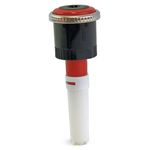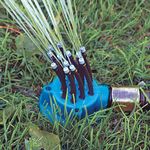
Weather in the Mountain States can be unpredictable. Okay, maybe that is downplaying it. Let’s call it what it is: weather whiplash. We wear layers to deal with this weather, and we can apply layers of plants and layers of interest to our gardens.
Here’s a quick run through of the things that need our attention this time of year.
Prune spring blooming shrubs after they put on their big show. Lilac (Syringa spp. and cvs., Zones 3–8), forsythia (Forsythia spp. and cvs., Zones 3–9), kerria (Kerria japonica, Zones 4–9), and deutzia (Deutzia spp. and cvs., Zones 5–8) can all be shaped, and deadwood removed. If you are so inclined, removing the spent blossom clusters from lilacs can increase the number and size of blossoms next year. It is not necessary, but for some obsessive gardening types, it is the kind of chore we relish.

Cut back spent iris stems, and snap the seed heads from your tulips and daffodils. Trim off the blown-out buds of old man’s whiskers (Geum triflorum, Zones 3–7) and creeping veronica (Veronica repens, Zones 3–9). Remove the seed heads of your ornamental alliums—off with their heads! In the warmest parts of the region, cut the asters (Symphyotrichum spp. and cvs., Zones 4–8) back by at least a third. Get a grip on that wisteria (Wisteria spp. and cvs., Zones 5-9). Give the clematis (Clematis spp. and cvs., Zones 4–11) a haircut, redirecting the vines and holding them in place with rubber-coated flexible wire or zip ties.
Run your sprinkler system, and do a thorough check of it. Make sure the sprinkler heads are not blocked by the overgrown coneflowers (Echinacea spp. and cvs., Zones 3-9) or ornamental grasses. If they are, something has to give. I suggest the sprinkler head be moved. Are the heads all working efficiently? Are the stations running long enough or too long? Too long means your perfectly good money is going right down the proverbial drain. Really.
There is still time to plant or replant, as in my case, the temperamental bush beans and other reluctant germinators. No swearing allowed!

Photograph your garden. Take pictures of every last detail. Use your calendar to make notes. Our memories are not what they used to be. Tuck disposable wooden chopsticks or popsicle sticks inscribed with indelible ink next to plants, reminding yourself of promises you made: “Gift three of these orange irises to my friend Sue,” or “Move half of this ice plant to the other side of the path when it cools down.”
By the time you read this, most of us will be out of the woods as far as a last frost goes. No guarantees, but let’s get out there and get on with our gardening!
Mary Ann Newcomer is the author of two books: Rocky Mountain Gardener’s Handbook and Vegetable Gardening in the Mountain States.
Fine Gardening Recommended Products

Hunter Industries MP-1000-90 Hunter Nozzle
Fine Gardening receives a commission for items purchased through links on this site, including Amazon Associates and other affiliate advertising programs.

D&X Garden Sprinkler
Fine Gardening receives a commission for items purchased through links on this site, including Amazon Associates and other affiliate advertising programs.

Morvat Heavy Duty Brass Y-Valve
Fine Gardening receives a commission for items purchased through links on this site, including Amazon Associates and other affiliate advertising programs.



















Comments
Log in or create an account to post a comment.
Sign up Log in